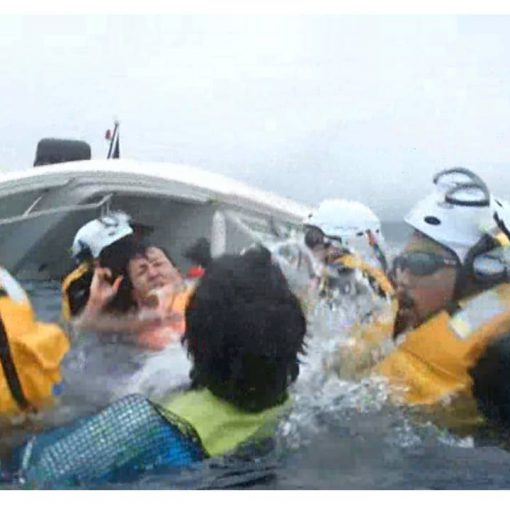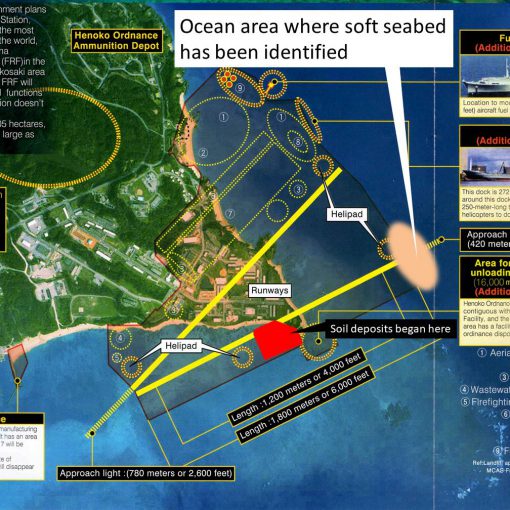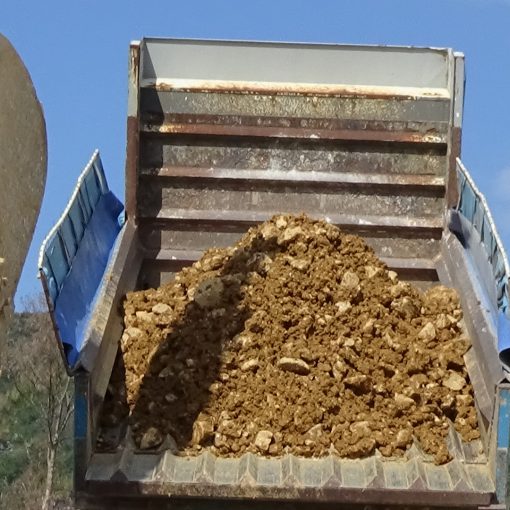(July 28, 2018 by Ryukyu Shimpo)
Governor Takeshi Onaga announced his plan to nullify Okinawa’s approval of land-filling activity in Henoko Bay.
It looks like the Japanese government, who has been forcing through the new base facility construction, is preparing various countermeasures to meet this action, and the battle is expected to head to the judiciary.
What the government should be doing is fixing Okinawa’s situation of years and years suffering from the over-burden of bases.
They should respect the decision of the governor, made with the backing of Okinawa’s people, and give up the new base construction at Henoko.
Governor Onaga, who was elected in 2014, nullified the decision to allow the landfilling made by his predecessor, Hirokazu Nakaima.
Through things like enforcement litigation, mediation, and seeking a decision from the Committee for Settling National-Local Disputes, Okinawa was finally defeated in a lawsuit brought by the Japanese government arguing failure to cooperate on the part of Okinawa.
Since this nullified Onaga’s nullification, currently the approval of land filling is in effect.
If there was something illegal about the giving of approval, its “nullification” will be effective all the way back to the time it was given.
Conversely, if there was illegal activity after the approval was given, the “revocation” of the permission takes effect at that moment.
Either way, this authority is given to the governor by Public Water Body Reclamation Law, which removes the legal foundation for land reclamation by the operator, in this case the Japanese government.
If the government does not change its stance, the governor can hold a hearing for the operator, and rescind if necessary.
The repeated legal battles between Okinawa and the Japanese government is not normal.
The government has been running over Okinawa with lawsuits to push their unilateral position.
Even regarding the destruction of coral reef, the government unilaterally decided they did not need Okinawa’s permission and forced it through.
Okinawa brought forth a suit to stop this, which is still being argued in court.
In the enforcement lawsuit filed in 2015 after the approval was nullified, the judge advised out-of-court mediation, which was accepted by both sides.
However, the government soon revised their position, leading Okinawa to seek a ruling from National-Local Dispute Committee.
The committee chair however avoided giving a decision, instead commenting, “The best way to solve this issue is for the central government and Okinawa need to cooperate in earnest, and work together to reach a decision to which they both can agree.”
However, without any semblance of a will to cooperate, the central government opened up a new lawsuit.
Japan outright ignored the intent of both the judiciary and the committee.
The basis of this problem is the fact that Okinawa, which accounts for only 0.6% of all land in Japan, contains 70% of all the land designated for U.S. military use.
While the overburden of bases is being thrust upon them, the government continues to ignore the voice of a majority of Okinawans who want the bases reduced and forces through construction that is destroying valuable natural resources.
Is such behavior even thinkable outside of Okinawa?
Even Shigeru Ishiba, former Secretary General of the Liberal Democratic Party (LDP) commented on choosing Henoko to construct the base, saying, “It is not the ‘best’ or even ‘better.’
It can only be called the ‘worst.’” There must be countless place outside of Okinawa that would not be “the worst.” If a replacement for MCAS Futenma is truly necessary, we must demand that it be outside of Okinawa.
This kind of iron-fisted rule unthinkable in other parts of the country has been thrust upon Okinawa.
There are two separate standards, which is the heart of discrimination.
Many Okinawans support the governor’s decision.
We once again call on the central government to hear the will of the people.
The future is not forcing construction.





